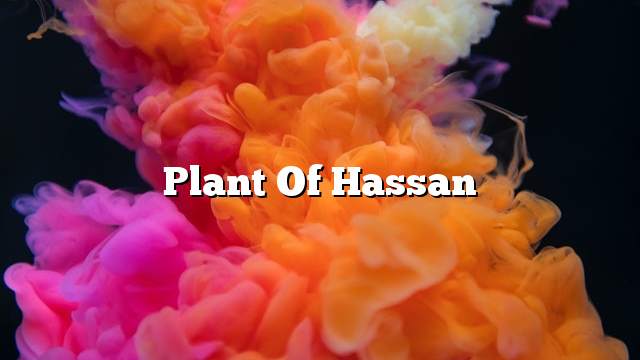This plant is a long shrub of some size, with a length of about one or a meter and a half. It also has white leaves and flowers with a somewhat funnel-like shape called belladonna. Some of them They are purple in color, and the fruits are green in color, but their color sometimes changes to black. Their roots are curved, twisted and brown. When used, only roots, leaves and stems can be used.
What is the original home where you live?
The place where this type of plant is most common is Europe, and it is also present in western Asia and northern Africa. These plants are abundant in calcareous lands, which are found in Asia. Summer, the roots are harvested a year after planting, in autumn.
What is the plant of St. Hassan?
Ancient people did not know the uses of the plant of St. Hassan, which has killed many people during the period of use, because the plant contains toxic substances and complex compounds nitrogen synthesis and alkalis, and it is called strong in effect, but later scientists began to use In the field of medicine, drugs and treatments, and doctors began to use them in many treatments, the most important, relaxation of members convulsive, and also helped in the treatment of gastroenteritis and relieve alkaline colic and pain associated with gastric diseases, and was used to treat sores that infect the stomach and The digestive system is also very useful for the treatment of urinary tract problems. Modern medicine has also been used to treat the central nervous system by controlling saliva and gastric and tracheal secretions. It has also helped to increase the number of heart beats in people suffering from Heart problems.
The pharmaceutical companies buy this plant greatly, as it helps in the manufacture of many drugs useful for the treatment of many diseases, in addition to the above has become the plant of St. Hassan used as an anesthetic to remove the pain of diseases, and treat colds and muscle cramps.
Warnings when using the plant of six Hassan:
1. This plant is poisonous, so be careful when using it, it may not be used without consulting a doctor.
2 – Do not get too close to the plant, as it leads to eye damage in some cases, when contact with the eye after touching the plant leads to reddening of the eye.
3 – Touching the plant leads to a state of dehydration in the body fluids, as it uses to dry the throat and body secretions in general, and reduces the secretion of sweat.
